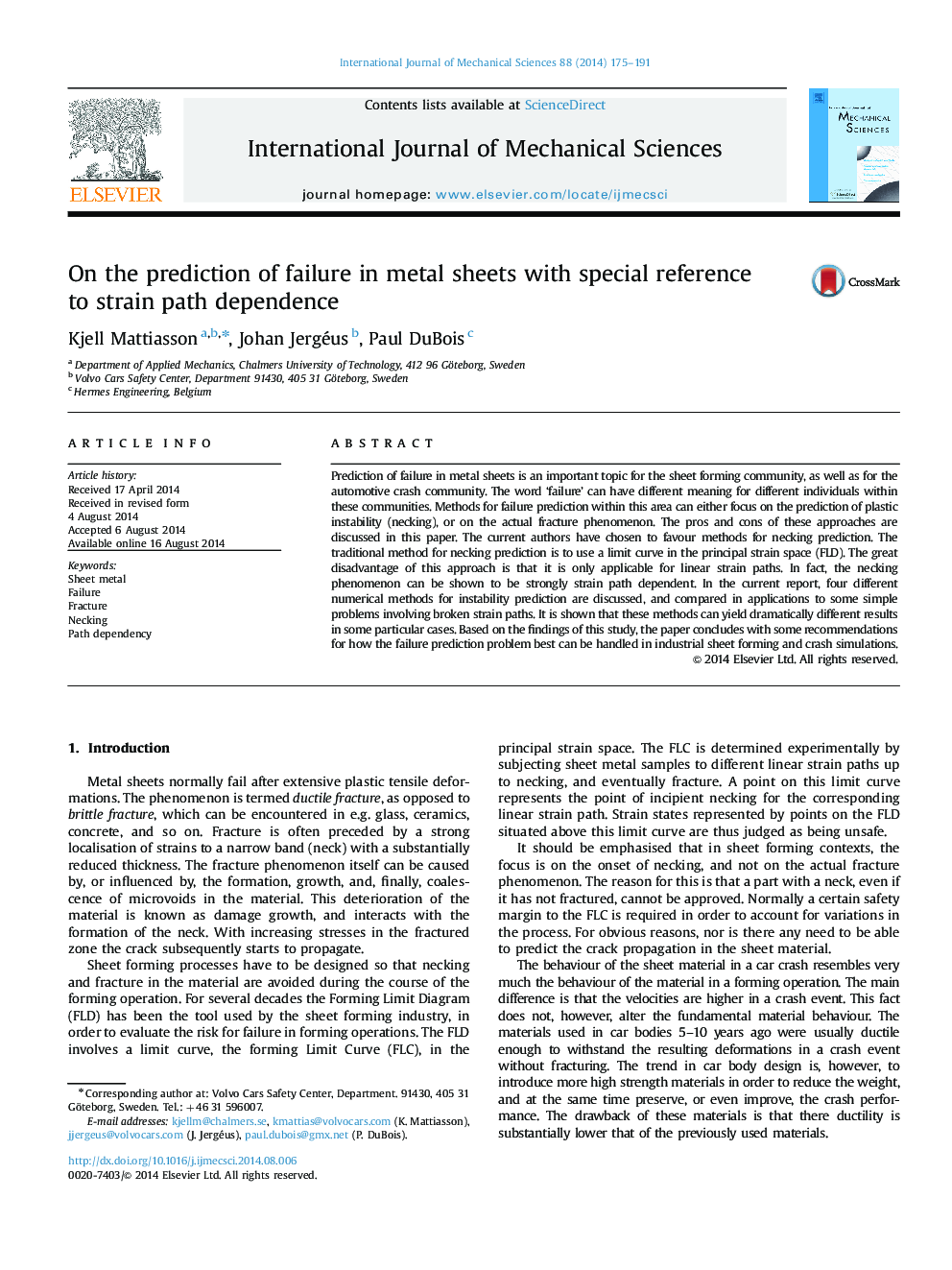| کد مقاله | کد نشریه | سال انتشار | مقاله انگلیسی | نسخه تمام متن |
|---|---|---|---|---|
| 780135 | 1464992 | 2014 | 17 صفحه PDF | دانلود رایگان |
• The concept of ’failure’ in sheet metal is discussed in terms of plastic instability and fracture.
• The use of plastic instability (necking) as a failure criterion is favoured in this study.
• Four numerical methods for necking prediction are compared in problems with broken strain paths.
• The various methods can in some cases predict dramatically different responses.
• Necking limit curves in some particular variable spaces can provide strain path independent results.
Prediction of failure in metal sheets is an important topic for the sheet forming community, as well as for the automotive crash community. The word ‘failure’ can have different meaning for different individuals within these communities. Methods for failure prediction within this area can either focus on the prediction of plastic instability (necking), or on the actual fracture phenomenon. The pros and cons of these approaches are discussed in this paper. The current authors have chosen to favour methods for necking prediction. The traditional method for necking prediction is to use a limit curve in the principal strain space (FLD). The great disadvantage of this approach is that it is only applicable for linear strain paths. In fact, the necking phenomenon can be shown to be strongly strain path dependent. In the current report, four different numerical methods for instability prediction are discussed, and compared in applications to some simple problems involving broken strain paths. It is shown that these methods can yield dramatically different results in some particular cases. Based on the findings of this study, the paper concludes with some recommendations for how the failure prediction problem best can be handled in industrial sheet forming and crash simulations.
Journal: International Journal of Mechanical Sciences - Volume 88, November 2014, Pages 175–191
